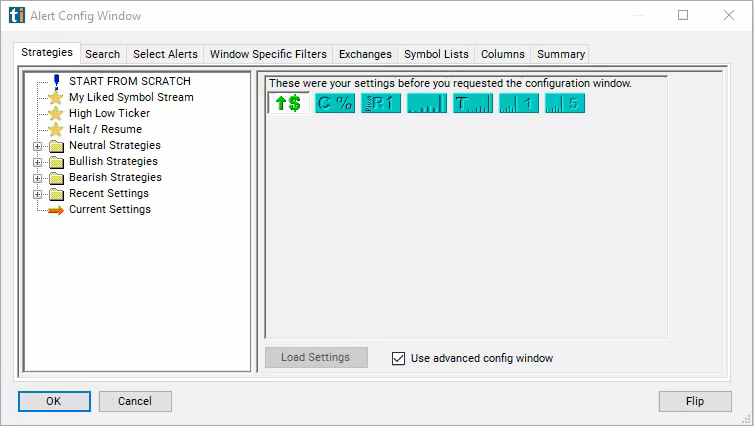Distance From Pivot
Table of Contents
- Understanding the Distance from Pivot Filter
- Distance from Pivot Filter Settings
- Using the Distance from Pivot Filter
- FAQs
Understanding the Distance from Pivot Filter
The Distance from Pivot filter refers to a technical analysis concept where traders measure the deviation of a stock's current price from a specific pivot point level. Pivot points are significant price levels derived from the previous day's price action, and they can help traders identify potential areas of support and resistance.
Here's how it works:
Calculation of Pivot Points: Pivot points are calculated based on the previous day's high, low, and close prices. The pivot point itself is the average of these three prices. Additionally, support and resistance levels are calculated around the pivot point. Here are the formulas to caculate those specific points:
- Resistance 2 = Pivot + (R1 - S1)
- Resistance 1 = 2 * Pivot - Low
- Pivot Point = (High + Close + Low) / 3
- Support 1 = 2 * Pivot - High
- Support 2 = Pivot - (R1 - S1)
Identification of Pivot Point Levels: The pivot point is calculated using the formula: (High + Close + Low) / 3
Measurement of Distance: Once pivot points are calculated, traders measure how far the current price of the stock is from these levels. This distance can be calculated as the absolute difference between the current price and the pivot point level (e.g., R1, S1) or as a percentage of the range between the pivot point and the level.
Application in Trading Strategies: Traders use the distance from pivot filter to make trading decisions. For example:
If the price is significantly above a pivot point level, it may suggest bullish sentiment or potential breakout opportunities. Conversely, if the price is below a pivot point level, it may indicate bearish sentiment or resistance.

Distance from Pivot Filter Settings
The settings of each Trade Ideas filter are defined in the Window Specific Filters Tab located in the Configuration Window of your Alert/Top List Window.
Here is how to setup the filter in your configuration window:
- To find stocks near their pivot point, set the min above pivot to -0.25% and the max above pivot to 0.25%. These stocks are right in the middle of where they traded yesterday.

Using the Distance from Pivot Filter
Several trading strategies can be employed with the Distance from Pivot filter. Here are a few examples:
Breakout Trading Strategy: Traders look for breakouts above or below pivot point levels (especially R1 or S1) combined with confirmation from the distance from pivot filter. If the price breaks above R1 and the distance from pivot indicates significant bullish momentum, traders may enter long positions, anticipating further upward movement. Conversely, if the price breaks below S1 and the distance from pivot indicates strong bearish sentiment, traders may initiate short positions, expecting further downward movement.
Trend Confirmation Strategy: Traders use the distance from pivot filter to confirm the strength of an existing trend. In an uptrend, if the price consistently remains above pivot point levels (especially R1), and the distance from pivot indicates bullish sentiment, traders may enter or hold onto long positions, expecting the uptrend to continue. Conversely, in a downtrend, if the price consistently stays below pivot point levels (especially S1), and the distance from pivot indicates bearish sentiment, traders may enter or hold onto short positions, expecting the downtrend to continue.
Reversal Trading Strategy: Traders look for reversal signals near pivot point levels combined with confirmation from the distance from pivot filter. If the price approaches a pivot point level (especially R1 or S1) and the distance from pivot suggests overbought or oversold conditions, traders may anticipate a reversal. They may then wait for additional confirmation, such as candlestick patterns or divergence in other indicators, before entering counter-trend positions.
FAQs
What are pivot points, and why are they important?
- Pivot points are significant price levels calculated from the previous day's high, low, and close prices. They help traders identify potential areas of support and resistance. Pivot points are important because they provide reference levels for traders to base their trading decisions on.
What does it mean if the price is above or below a pivot point level?
- If the price is above a pivot point level, it may indicate bullish sentiment, and the level could act as a potential support level. Conversely, if the price is below a pivot point level, it may suggest bearish sentiment, and the level could act as a potential resistance level.
Can the distance from pivot filter be used on different timeframes?
- Yes, the distance from pivot filter can be applied to various timeframes, including intraday, daily, weekly, or monthly charts. Traders should adjust their analysis and interpretation based on the timeframe they're trading.
Filter Info for Distance From Pivot [Pivot]
- description = Distance from Pivot
- keywords = Single Print Support and Resistance
- units = %
- format = 1
- toplistable = 1
- parent_code = PivotR2




